Case Study in Sustainable Building
By Thomas Anderson
Syllabus
Course: Case Study in Sustainable Building
Instructor: Thomas Anderson
Location:
-
Bloomsburg Children's Museum
2 West 7th Street
Bloomsburg PA 17815
Course Slides:
- http://andersonalternative.com/case-study/
- Note that the navigation is two-dimensional, with both left-right arrows and up-down arrows on some slides in order to move vertically deeper into some topics.
- To print or export these slides, go to http://andersonalternative.com/case-study/?print-pdf&showNotes=true in Chrome, then use the browser's print function (CTRL-P) to either print it to paper or export it to a PDF.
Goal:
- Students will learn a high-level overview of sustainable building, energy conservation, and off-grid energy production as a foundation for further study on these topics.
What is "Sustainable Building"?
inputs = outputs
Sustainable Building Standards
What is "Off-Grid"?
Motivations for Going Off-Grid

Risks to the Grid
Risks to the Grid
Risks to the Grid
Risks to the Grid
Risks to the Grid
Risks to the Grid
Risks to the Grid
Risks to the Grid
Risks to the Grid
Off Grid Benefits
Off Grid Benefits
Principles I've Followed
Methods I've Employed
Heating & Cooling
Ventilation
|
Power & Light
Water & Sanitation
|
Passive
Solar
Collect Heat in Winter
Repel Heat in Summer
|
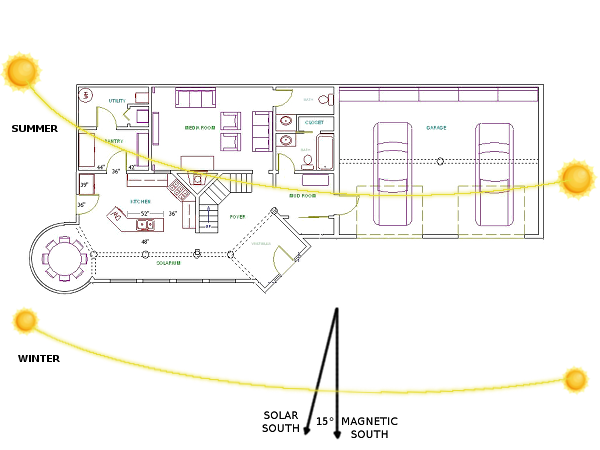
|
Passive
Solar
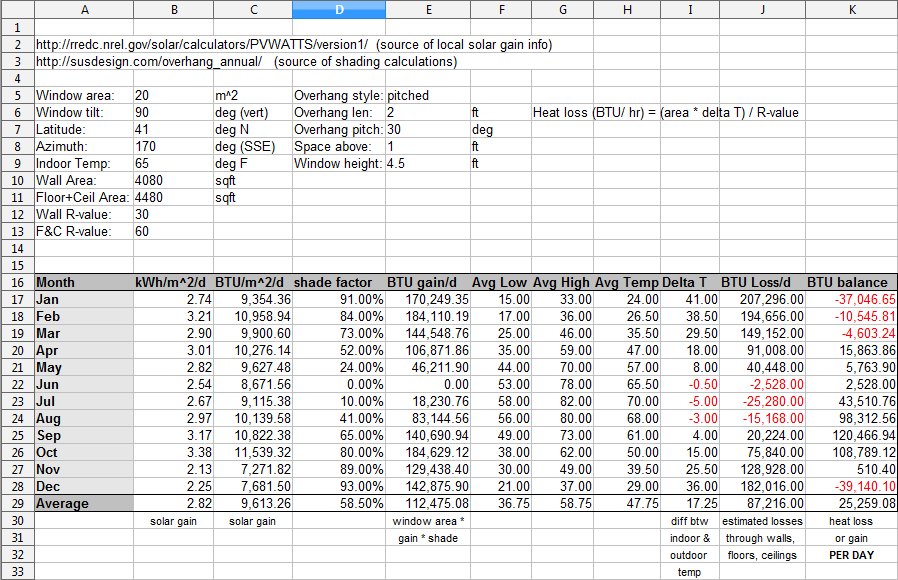 |
 |
Thermal Mass
| Material | Specific Heat (BTU/lb°F) | Density (lb/cf) | Heat Capacity (BTU/cf°F) | Emissivity | Conductivity (BTU/hr*ft°F) |
| air (dry) | 0.24 | 0.08 | 0.019 | 0.80 | 0.014 |
| sheetrock | 0.26 | 38 | 10 | 0.90 | 0.10 |
| wood (pine/fir) | 0.40 | 35 | 14 | 0.95 | 0.08 |
| wood (birch) | 0.40 | 42 | 17 | 0.93 | 0.08 |
| wood (maple) | 0.40 | 47 | 19 | 0.90 | 0.09 |
| wood (oak) | 0.40 | 48 | 19 | 0.89 | 0.10 |
| soil (dry) | 0.19 | 100 | 19 | 0.40 | 0.29 |
| lead | 0.03 | 709 | 21 | 0.06 | 20.20 |
| brick | 0.20 | 120 | 24 | 0.90 | 0.35 |
| glass | 0.17 | 161 | 27 | 0.93 | 0.61 |
| alcohol | 0.58 | 49 | 28 | 0.95 | 0.10 |
| slate | 0.18 | 168 | 30 | 0.75 | 1.16 |
| concrete | 0.21 | 150 | 32 | 0.90 | 0.50 |
| granite | 0.19 | 168 | 32 | 0.89 | 2.00 |
| asphalt | 0.24 | 145 | 35 | 0.88 | 0.43 |
| aluminum | 0.21 | 169 | 36 | 0.03 | 118.00 |
| porcelain | 0.26 | 150 | 39 | 0.95 | 0.87 |
| soil (wet) | 0.35 | 125 | 44 | 0.98 | 0.90 |
| clay | 0.33 | 150 | 50 | 0.95 | 0.90 |
| copper | 0.09 | 557 | 50 | 0.10 | 232.00 |
| iron | 0.11 | 490 | 54 | 0.90 | 46.20 |
| ammonia (aq) | 1.12 | 51 | 57 | 0.95 | 0.34 |
| steel | 0.12 | 491 | 59 | 0.20 | 24.80 |
| water | 1.00 | 63 | 63 | 0.99 | 0.34 |
Kitchen/foyer insulated concrete slab:
240 cf * 32 BTU/cf°F = 7680 BTU/°F
January day gain:
170,249.35 BTU / 7680 BTU/°F = 22.2°F
e.g. slab 55°F --> 77.2°F
House air volume:
27,000 cf * 0.019 BTU/cf°F = 513 BTU/°F
Each 1°F the slab loses...
will cause the air to gain (or resist losing)...
1°F * (7680 BTU/°F) / (513 BTU/°F) = 15°F
240 cf * 32 BTU/cf°F = 7680 BTU/°F
January day gain:
170,249.35 BTU / 7680 BTU/°F = 22.2°F
e.g. slab 55°F --> 77.2°F
House air volume:
27,000 cf * 0.019 BTU/cf°F = 513 BTU/°F
Each 1°F the slab loses...
will cause the air to gain (or resist losing)...
1°F * (7680 BTU/°F) / (513 BTU/°F) = 15°F
Earth Sheltering / Passive Geothermal

Insulation
Three kinds of heat transfer
Conduction
- Fiberglass, cellulose, or spray foam insulation impedes conduction of heat through walls
Convection
- House wrap on the exterior, vapor barrier on the interior, foaming of all wall openings, and installing weather stripping will prevent the movement of air between inside and outside
Radiation
- Reflective aluminum radiant barrier installed in the walls and ceilings prevents the transmission of infrared EM waves through the structure
High-density Closed-cell Spray Foam
Radiant Barrier
97% reflective
 |
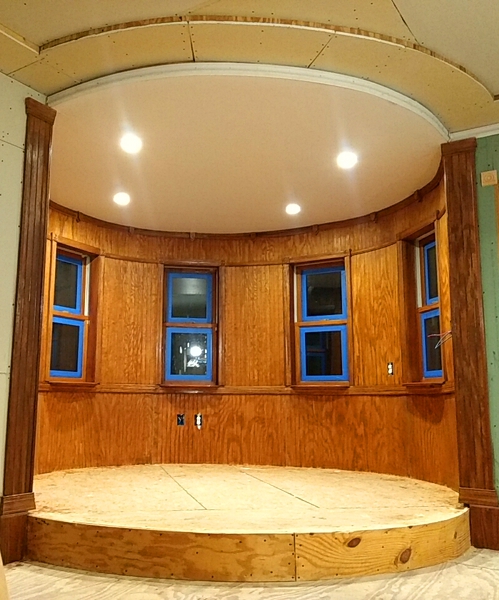 |
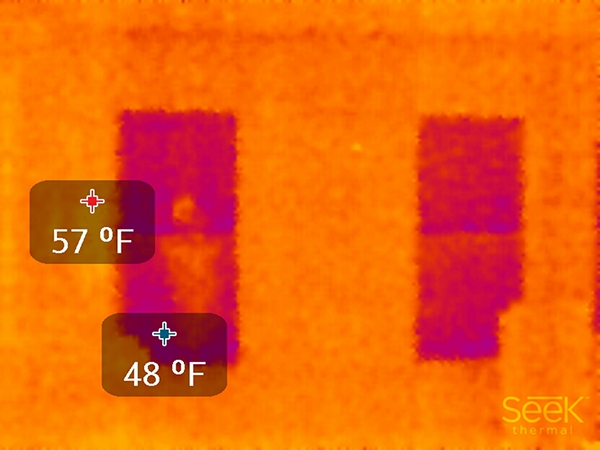 |
Solar Thermal Heating
|
|
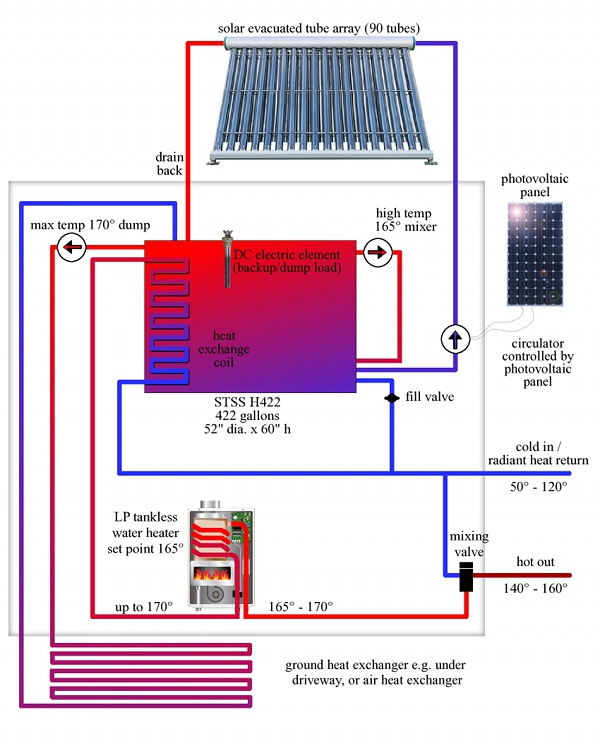
|
Hydronic Heating
Radiant Floor Heating
Landscape Cooling
Root Cellar Refrigeration
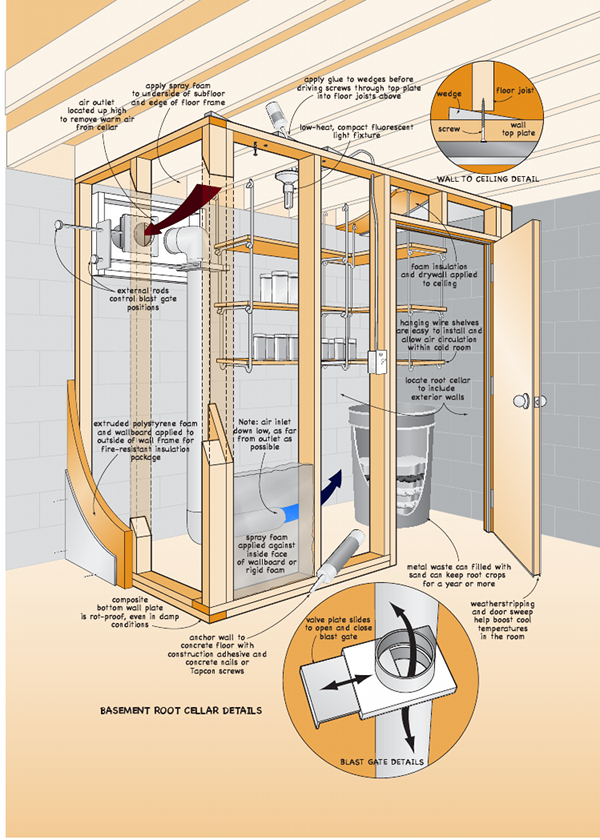
Efficient Wood Fuel Stoves
Stack Effect Ventilation
Earth Tube Air Tempering
Cross-breeze Cooling
Solar Photovoltaics
Wind Power
Thermoelectric Power
Propane Backup
Deep Cycle Batteries

LED Lighting
Solar Tube Daylighting
Water Conservation
Water Conservation equals energy conservation
- Pumping water requires energy
- Filtering water requires energy
- Softening water requires energy
- Heating water requires energy
- Disposing of waste water requires energy
Methods
- Water & energy efficient (ENERGY STAR) dish and clothes washers – use 1/3rd to 1/10th as much water as older models
- Low flow shower heads
- Low flow toilets – use less than half the water of old toilets
- Grey water disposal or recycling – keep from running septic pump
- Rain barrels for landscape watering or toilet flushing – free, gravity-fed, fresh water from the sky – no pumping
- Xeriscaping - Native plants which require little fertilizer, irrigation, or maintenance
Hot Water Recirculation
Direct Current
Direct Current
Horn Amplified Speaker System

Conclusion
Register Now! Call 570-389-4420
- 4 Classes / Tuition $95:
- Thursday, Sep 19, 2019, 6:30 to 8:30 PM
- Thursday, Sep 26, 2019, 6:30 to 8:30 PM
- Thursday, Oct 03, 2019, 6:30 to 8:30 PM
- Thursday, Oct 10, 2019, 6:30 to 8:30 PM
- 4 Classes / Tuition $115 / Materials $450:
- Thursday, Nov 07, 2019, 6:30 to 9:30 PM
- Thursday, Nov 14, 2019, 6:30 to 9:30 PM
- Thursday, Nov 21, 2019, 6:30 to 9:30 PM
- Thursday, Dec 05, 2019, 6:30 to 9:30 PM